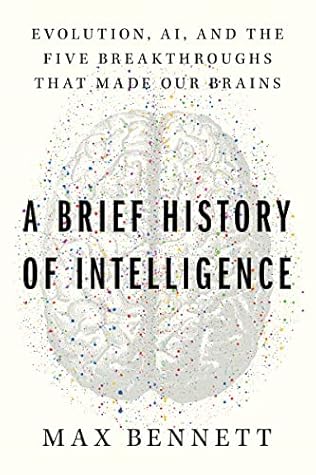More on this book
Community
Kindle Notes & Highlights
Read between
August 14 - August 19, 2025
Respiratory microbes differed in one crucial way from their photosynthetic cousins: they needed to hunt. And hunting required a whole new degree of smarts.
There is an incredible diversity of neurons, but despite this diversity in shapes and sizes, all neurons work the same way. This is the most shocking observation when comparing neurons across species—they are all, for the most part, fundamentally identical. The neurons in the human brain operate the same way as the neurons in a jellyfish. What separates you from an earthworm is not the unit of intelligence itself—neurons—but how these units are wired together.
Sugar is produced only by life, and thus there are only two ways for large multicellular respiratory organisms to feed. One is to wait for life to die, and the other is to catch and kill living life. Early in the fungi-animal divergence, they each settled into opposing feeding strategies. Fungi chose the strategy of waiting, and animals chose the strategy of killing.* Fungi eat through external digestion (secreting enzymes to break food down outside the body), while animals eat through internal digestion (trapping food inside the body and then secreting enzymes). The fungal strategy was, by
...more
Gastrulation, neurons, and muscles are the three inseparable features that bind all animals together and separate animals from all other kingdoms of life.
There is another observation about bilaterians, perhaps the more important one: They are the only animals that have brains. This is not a coincidence. The first brain and the bilaterian body share the same initial evolutionary purpose: They enable animals to navigate by steering. Steering was breakthrough #1.
While the exact functions of dopamine and serotonin have been elaborated throughout different evolutionary lineages, this basic dichotomy between dopamine and serotonin has been remarkably conserved since the first bilaterians. In species as divergent as nematodes, slugs, fish, rats, and humans, dopamine is released by nearby rewards and triggers the affective state of arousal and pursuit (exploitation); and serotonin is released by the consumption of rewards and triggers a state of low arousal, inhibiting the pursuit of rewards (satiation).
In a controversial set of experiments in the 1960s, the psychiatrist Robert Heath implanted electrodes in the brains of humans so that patients could push a button to stimulate their own dopamine neurons. Patients quickly began repeatedly pressing this button, often hundreds of times an hour. One might assume this was because they “liked” it, but in Heath’s words: The patient, in explaining why he pressed the septal button with such frequency, stated that the feeling was . . . as if he were building up to a sexual orgasm. He reported that he was unable to achieve the orgastic end point,
...more
Berridge proved that dopamine is less about liking things and more about wanting things.
The second breakthrough was reinforcement learning: the ability to learn arbitrary sequences of actions through trial and error.
In fact, lesioning the front part of the basal ganglia is an effective (although highly controversial and questionably ethical) treatment for drug addiction. The relapse rate for heroin addicts is absurdly high; some estimate as high as 90 percent. One study in China took the most severe heroin addicts and lesioned the front part of their basal ganglia. The relapse rate dropped to 42 percent. People lose the automatic behavior of pursuing cues and generating cravings (of course, there are also many side effects of such a surgery).
If we revisit our mysterious patients with granular prefrontal damage and test them for theory-of-mind tasks, we begin to see a common theme emerge from their seemingly disparate, subtle, and bizarre symptoms. Such patients are worse at solving false-belief tests like the Sally-Ann test; they are much worse at recognizing emotions in other people; they struggle to empathize with other people’s emotions, struggle to distinguish lies from jokes, struggle to identify a faux pas that would offend someone, struggle to take someone else’s visual perspective, and struggle to deceive others.


